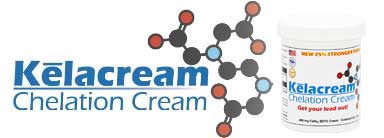About EDTA Chelation Therapy
Chelation therapy is a chemical process in which a synthetic amino acid, EDTA (ethylenediaminetetraacetic acid) is introduced into the body to remove heavy metals and/or minerals. Chelation means “to grab” or “to bind.” When EDTA is present in the body, it “grabs” heavy metals and minerals such as lead, mercury, copper, iron, arsenic, aluminum, and calcium and removes them from the body through urine and feces.
Chelation is an effective way to treat heavy-metal toxicity. EDTA binds with harmful metal and both are then eliminated from the body through the kidneys. Some health professionals have also used chelation therapy to treat atherosclerosis and/or coronary artery disease with the theory that EDTA binds with calcium deposits (the part of plaque that obstructs the flow of blood to the heart) in the arteries, and then “cleans out” the calcium deposits from the arteries, reducing the risk of heart problems.
It is also suspected that EDTA may act as an antioxidant by removing metals that combine with LDL cholesterol, which can damage arteries. The theory is that when you remove metals that flow freely through arteries (such as copper or calcium), you may slow down diseases such as atherosclerosis. Some experts also believe EDTA could remove calcium from healthy bones, muscles, and other tissues, as well as from diseased arteries.
Many people report less pain from chronic inflammatory diseases such as arthritis, lupus, and scleroderma after chelation therapy. The theory is that EDTA acts as an antioxidant, which protects the body from inflammation and protects blood vessels. All of these theories are based on patient outcomes and not on clinical studies.
Importance of Mineral Replenishment
When anyone begins a course of chelation therapy, it is very important to replenish minerals. Chelation will remove the bad heavy metals like lead but will also remove good minerals like calcium, magnesium, potassium, sodium, and so on.

